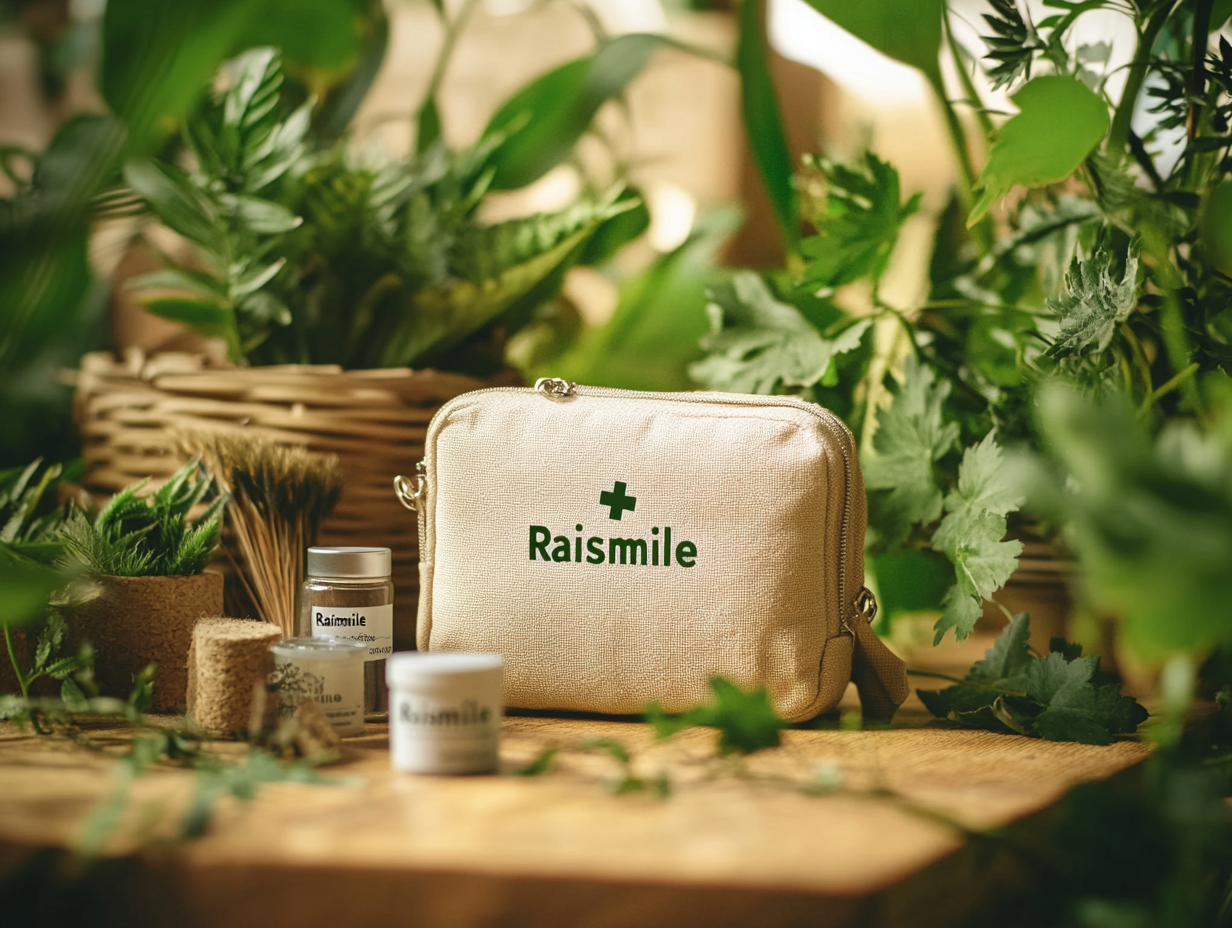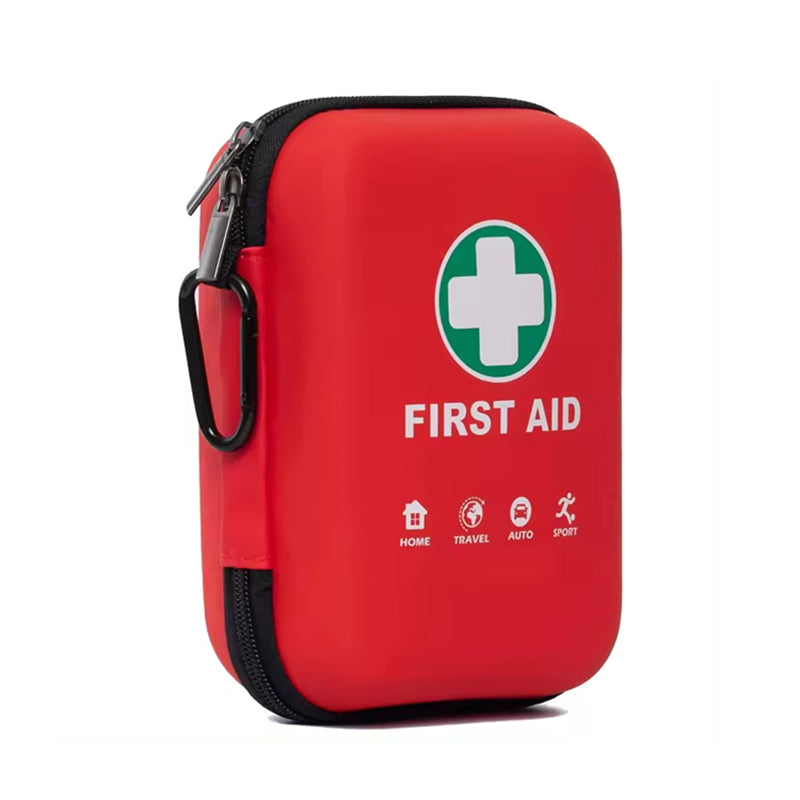The Green Revolution of Hard Shell First Aid Kits

Amid the global wave of sustainable development, the medical emergency equipment industry is undergoing a quiet yet transformative green revolution. As a core piece of emergency rescue gear, the hard shell first aid kit must not only meet the basic requirements for functionality and durability, but also fulfill its mission of environmental friendliness in this new era.
This article delves into the environmental secrets of the hard shell first aid kit, uncovering the technological breakthroughs of EVA material and the strategic value of environmental certifications.
Material Revolution: EVA Paves the Green Era of Medical Emergency Equipment
1.1 The Environmental Dilemma of Traditional Materials
Traditional hard shell first aid kits typically use PVC or ABS plastic, both of which present significant environmental concerns:
- Production Stage: Every ton of PVC produced releases 0.8 to 1.2 tons of CO₂ and requires plasticizers such as phthalates.
- Recycling Challenges: The recycling rate for ABS materials is less than 30%, and incineration produces dioxins and other toxic substances.
- Health Risks: Lead stabilizers in these materials can migrate through contact, posing health risks.
1.2 Decoding the Environmental Advantages of EVA Material
The molecular structure of Ethylene-Vinyl Acetate Copolymer (EVA) (C₂H₄-C₄H₆O₂) gives it revolutionary environmental properties:
- Zero-Toxicity Manufacturing Process: The entire production process does not involve chlorine, preventing the formation of dioxins.
- Low-Temperature Molding Technology: EVA processing occurs at 40-60°C lower temperatures than traditional plastics, saving 35% energy.
- Closed-Loop Recycling System: Physical recycling achieves a 92% reuse rate, and chemical depolymerization can recover raw monomers.
1.3 Environmental Performance Throughout the Product Lifecycle
According to the Life Cycle Assessment (LCA) from TÜV Rheinland, Germany, the data shows the following:
| Indicator | EVA First Aid Kit | PVC First Aid Kit |
| Carbon Emissions (kg CO₂) | 3.2 | 7.8 |
| Water Consumption (L) | 120 | 280 |
| Recyclability (%) | 95 | 28 |
Building Competitive Barriers with International Environmental Certifications
2.1 The Deep Significance of REACH Regulations
The EU's REACH (Registration, Evaluation, Authorization, and Restriction of Chemicals) regulation imposes strict requirements on first aid kits:
- SVHC (Substances of Very High Concern) Control: A ppm-level inspection of 211 substances on the SVHC list.
- Material Reporting System: Manufacturers must provide a complete material flow chart for the entire supply chain.
- Biodegradation Testing: In simulated marine environments, the degradation rate must reach 90% within 180 days.
2.2 Technological Breakthroughs in RoHS Directive
To comply with the EU RoHS (Restriction of Hazardous Substances) Directive 2.0, manufacturers of first aid kits need to:
- Lead Substitution Technology: Use tin-silver-copper-based lead-free solder (Sn96.5/Ag3.0/Cu0.5).
- Flame Retardant Innovation: Replace hexabromocyclododecane (HBCDD) with phosphorus-nitrogen-based flame retardants.
- Enhanced Detection Precision: Employ EDXRF spectrometers for a detection limit as low as 0.01%.
2.3 The Triple Certification System
Leading companies have established the "Environmental Iron Triangle" certification system:
- Cradle to Cradle: Ensures materials can re-enter biological or technical cycles.
- Blue Angel: Certification of product environmental performance according to strict German standards.
- EPEAT: The gold standard for medical equipment sustainability.
The Business Logic of Creating Environmental Value
3.1 The Evolution of Market Demand
Global market research shows that:
- 73% of government procurements now include environmental standards in their bidding criteria.
- 56% of corporate users are willing to pay a 15-20% premium for eco-friendly first aid kits.
- ESG (Environmental, Social, and Governance) investment in green medical devices grows annually by 34%.
3.2 Supply Chain Synergy Effects
The introduction of eco-friendly materials triggers industry-wide transformations:
- Raw Materials: Collaborations with companies like Eastman Chemical to develop recycled EVA (containing 40% ocean-recycled plastics).
- Manufacturing: The adoption of real-time carbon footprint monitoring systems to generate digital environmental certificates for each product.
- Logistics: Use of mushroom mycelium-based packaging to reduce transportation carbon emissions by 62%.
3.3 Risk Management Systems
To comply with new EU regulations, a pre-warning mechanism is put in place:
- SCIP Database: Products containing SVHC substances must be reported six months in advance.
- Carbon Border Adjustment Mechanism (CBAM): A blockchain traceability system tracks carbon emissions throughout the production process.
- Circular Economy Act: Products are designed with removable parts, ensuring 95% of components are replaceable.
Industry Outlook: Technological Roadmap Toward Carbon Neutrality
4.1 Directions for Material Innovation
- Bio-based EVA: Using ethanol extracted from sugarcane to produce ethylene monomers, reducing carbon footprints by 70%.
- Self-Healing Coatings: Microcapsule technology extends the product lifecycle to over 10 years.
- Smart Degradation: Embedded temperature and humidity sensors trigger controlled biodegradation.
4.2 Predicted Upgrades to Certification Standards
By 2025, the EU plans to implement a full lifecycle carbon labeling system for medical devices, and ISO 14067 carbon footprint verification will become a key requirement for exports. The FDA is also expected to introduce new eco-toxicology regulations.
4.3 Innovations in Business Models
- Product as a Service: First aid kits available for rent, with regular eco-friendly upgrades.
- Carbon Credit Trading: Participate in international carbon markets through carbon offset products.
- Closed-Loop Ecosystem: Establish raw material return incentive programs with recycling companies.
In the new normal, where climate crises and public health risks intersect, the environmental innovation of hard shell first aid kits has surpassed mere compliance and is reshaping the competitive landscape of the medical emergency industry.
From material innovations at the molecular level to comprehensive certification systems that span the product lifecycle, and new business models for managing carbon assets, this green revolution is not just about corporate social responsibility.
It is a strategic choice to tap into the trillion-dollar sustainable development market. As the hard shell first aid kit wraps its environmental core, it is safeguarding not just immediate lives but also the future of humanity.
